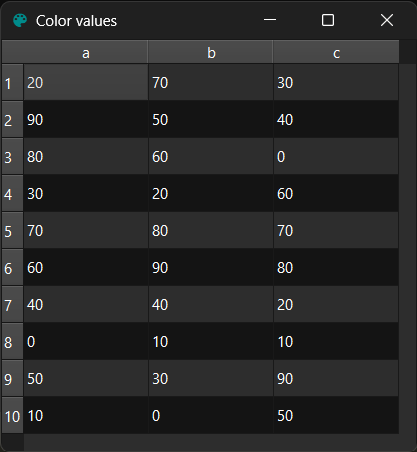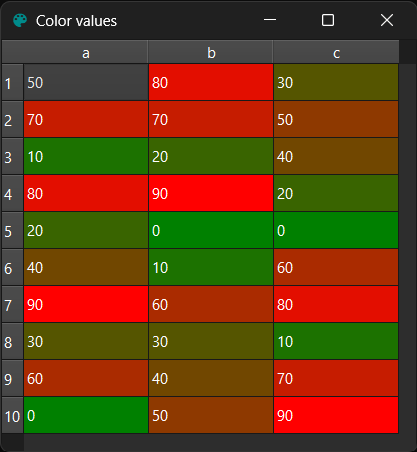SliceColorValuesProxyModel
Qt Base Class: QIdentityProxyModel
Signature: QIdentityProxyModel(self, parent: Optional[PySide6.QtCore.QObject] = None) -> None
Base classes
| Name | Children | Inherits |
|---|---|---|
| SliceIdentityProxyModel prettyqt.itemmodels.proxies.sliceidentityproxymodel |
⋔ Inheritance diagram
graph TD
1473290727680["itemmodels.SliceColorValuesProxyModel"]
1473290716944["itemmodels.SliceIdentityProxyModel"]
1473299892128["core.IdentityProxyModel"]
1473299903840["core.AbstractProxyModelMixin"]
1473299890176["core.AbstractItemModelMixin"]
1473299815024["core.ObjectMixin"]
140713234304496["builtins.object"]
1473289064768["QtCore.QIdentityProxyModel"]
1473289061840["QtCore.QAbstractProxyModel"]
1473289050128["QtCore.QAbstractItemModel"]
1473288842240["QtCore.QObject"]
1473291690208["Shiboken.Object"]
1473290716944 --> 1473290727680
1473299892128 --> 1473290716944
1473299903840 --> 1473299892128
1473299890176 --> 1473299903840
1473299815024 --> 1473299890176
140713234304496 --> 1473299815024
1473289064768 --> 1473299892128
1473289061840 --> 1473289064768
1473289050128 --> 1473289061840
1473288842240 --> 1473289050128
1473291690208 --> 1473288842240
140713234304496 --> 1473291690208🛈 DocStrings
Bases: SliceIdentityProxyModel
Model to color cells of a numerical table based on their value.
By default, "high" numbers are colored red, "low" are colored green.
Possible modes are: * All: Highlight all cells within given slice * Column: Highlight all cells of same column as current if cell is within given slice. * Row: Highlight all cells of same row as current if cell is within given slice.
The last two modes have the advantage that nothing needs to be computed in advance, min/max values are calculated on-the fly.
Example
model = MyModel()
table = widgets.TableView()
table.set_model(model)
table[:, :3].proxify.color_values(mode="all")
table.show()
# or
indexer = (slice(None), slice(None, 3))
proxy = itemmodels.SliceColorValuesProxyModel(indexer=indexer)
proxy.set_source_model(model)
table.set_model(proxy)
table.show()
Source code in prettyqt\itemmodels\proxies\slicecolorvaluesproxymodel.py
32 33 34 35 36 37 38 39 40 41 42 43 44 45 46 47 48 49 50 51 52 53 54 55 56 57 58 59 60 61 62 63 64 65 66 67 68 69 70 71 72 73 74 75 76 77 78 79 80 81 82 83 84 85 86 87 88 89 90 91 92 93 94 95 96 97 98 99 100 101 102 103 104 105 106 107 108 109 110 111 112 113 114 115 116 117 118 119 120 121 122 123 124 125 126 127 128 129 130 131 132 133 134 135 136 137 138 139 140 141 142 143 144 145 146 147 148 149 150 151 152 153 154 155 156 157 158 159 160 161 162 163 164 165 166 167 168 169 170 171 172 173 174 175 176 177 178 179 180 181 182 183 184 185 186 187 188 189 190 191 192 193 194 195 196 197 198 199 200 201 202 203 204 205 206 207 | |
Info
This is a slice proxy and can be selectively applied to a model. Read more about slices.
⌗ Property table
| Qt Property | Type | Doc |
|---|---|---|
objectName |
QString | |
sourceModel |
QAbstractItemModel | |
column_slice |
QVariantList | Column slice to include for the proxy |
row_slice |
QVariantList | Row slice to include for the proxy |
color_mode |
PySide::PyObjectWrapper | Mode to use for coloring |
low_color |
QColor | Color for lower end of color spectrum |
high_color |
QColor | Color for upper end of color spectrum |

